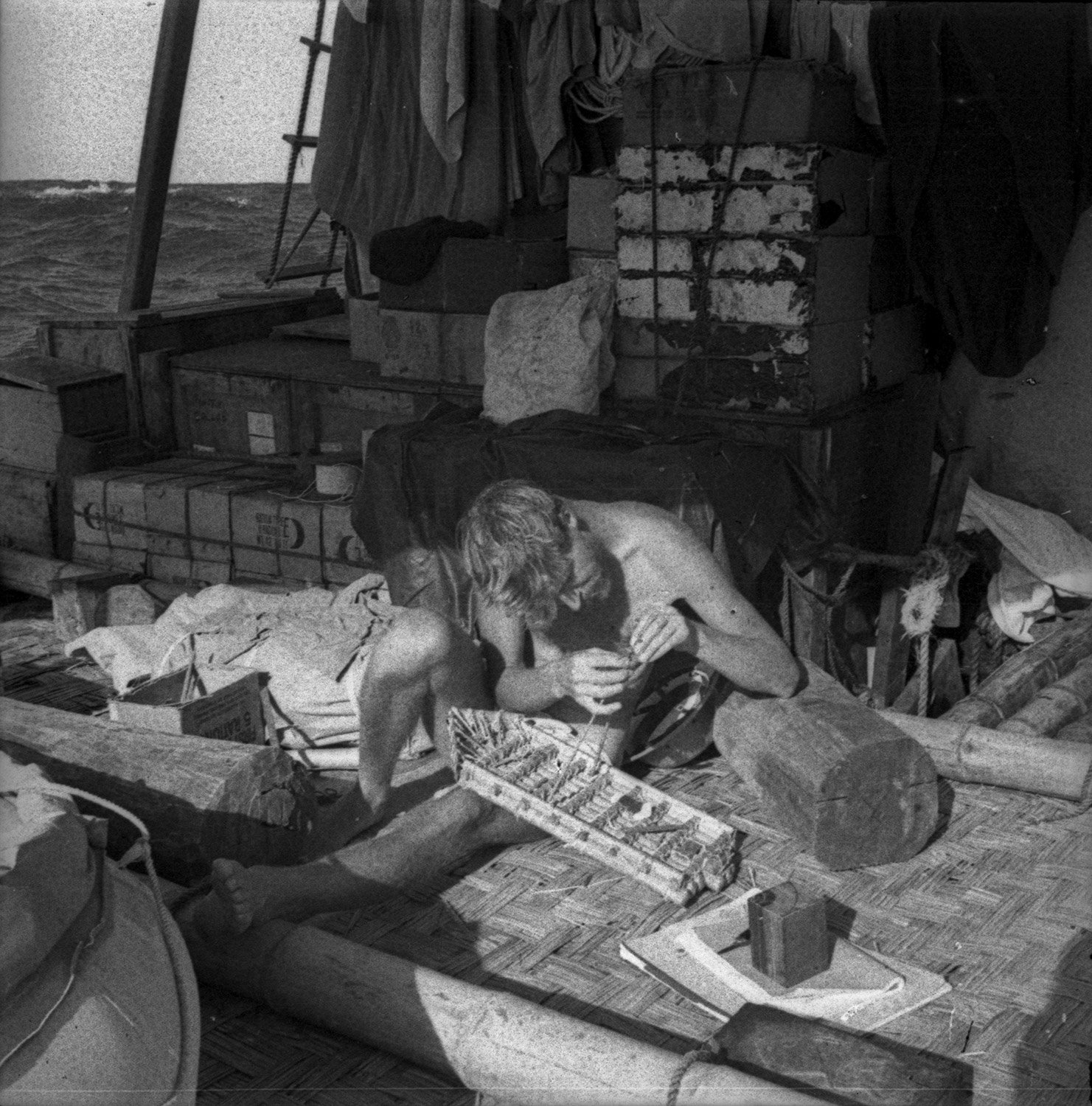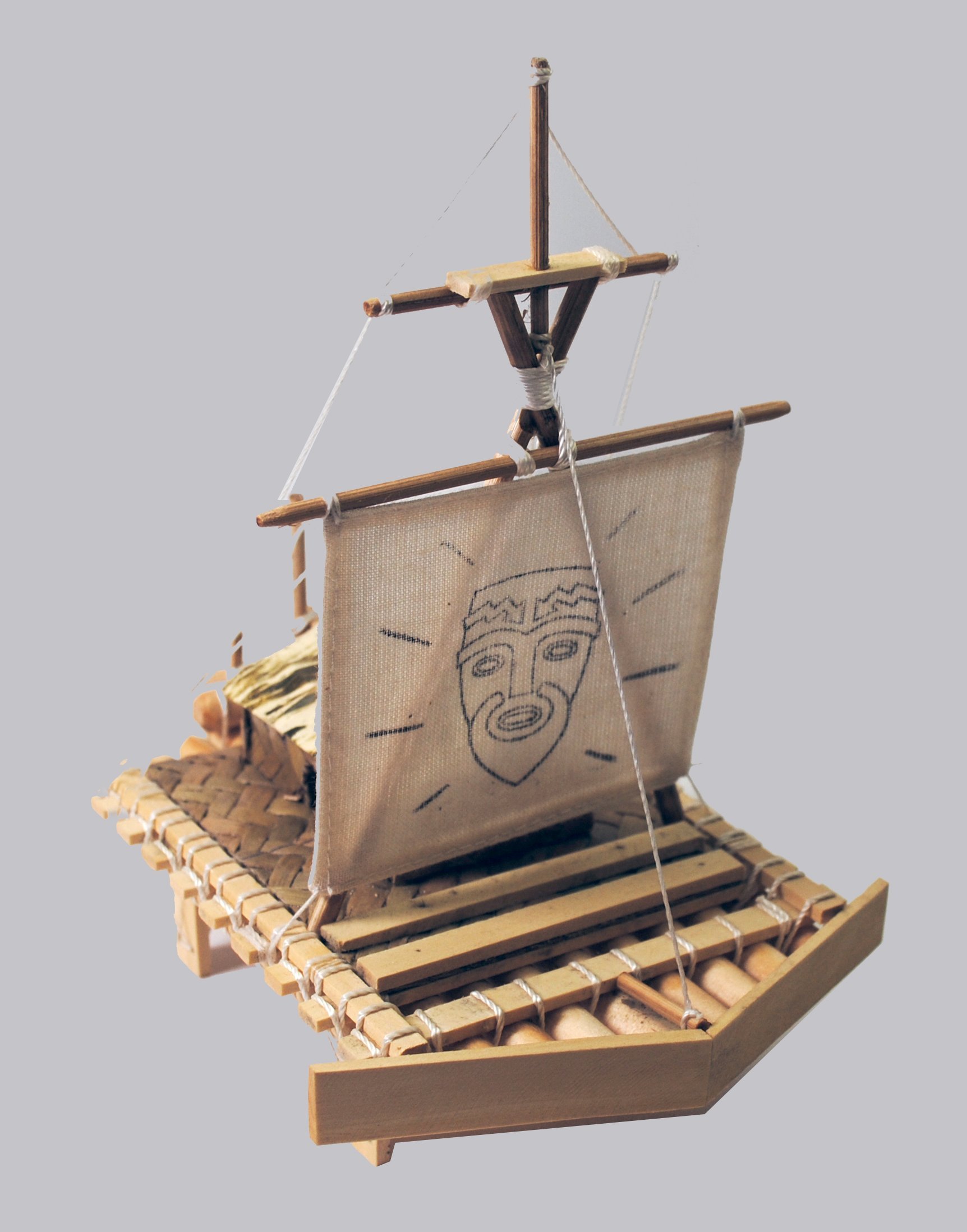Models of the Kon-Tiki fleet
The Kon-Tiki fleet made headlines when it completed the voyage from Callao, Peru, to Raroia in the Tuamotu Islands, French Polynesia in 1947. The "Kon-Tiki" brand became widely used in popular culture. However, in the small world of scale model building, very few kits of the Kon-Tiki fleet have been made. Here is a brief history of these scale model kits, although there is much we do not know.
The Kon-Tiki expedition was practically bankrupt when the raft was towed out of Callao harbor on April 28, 1947. Consequently, Thor Heyerdahl and his crew turned their attention to ways to make money and repay some of the $15,000 debt they had incurred.
Thor Heyerdahl had intended to do his part on a lecture tour, and write a book about the expedition entitled Kon-Tiki. On a raft across the South Seas. A documentary was also filmed about the journey, which they believed had economic potential. "On a raft over the South Seas" was already a bestseller when it was published in the United States in 1950, and it spent 52 weeks on the New York Times list of best-selling non-fiction books. The film won an Oscar for best documentary film, and became popular in cinemas.
The documentary film "Kon-Tiki" won the Oscar in 1951 and was a huge hit at the box office. At this cinema, "Kon-Tiki" is the headline, overshadowing Walt Disney's "Beaver Valley".
Knut M. Haugland made a 1:50 model of the Kon-Tiki fleet during the voyage in 1947.
Knut M. Haugland had two proposals;
One that the raft should be brought back and exhibited in a small museum, and an idea that was championed by the expedition's member on land, Gerd Vold Hurum.
Second, that they could make small-scale models of the raft, preferably seen where people can build their own balsa wood raft. To show the others, Haugland made a perfect copy of the fleet in scale 1:50 during the voyage. Today this is on display in the Kon-Tiki Museum as a gift from his family.
The Kon-Tiki expedition became a spectacle around the world, and many companies began selling the Kon-Tiki brand, and hotels, restaurants and bars often borrowed the name. The Kon-Tiki raft was not only reproduced in logos, but a French manufacturer sold rafts made of plastic pipes, and in 1950 the Swedish manufacturer of traditional objects, Trä- & Konsthantverk in Rättvik, wrote to Knut M. Haugland for a license to to produce Kon-Tiki fleet models.
Haugland replied that the Kon-Tiki expedition could not grant or deny any rights to manufacture rafts and sell to children. In fact, he encouraged the project, but they just couldn't call the model "Kon-Tiki". He even suggested alternatives: "Tiki raft" or "Old Peruvian raft". Needless to say, this fleet model was never produced.
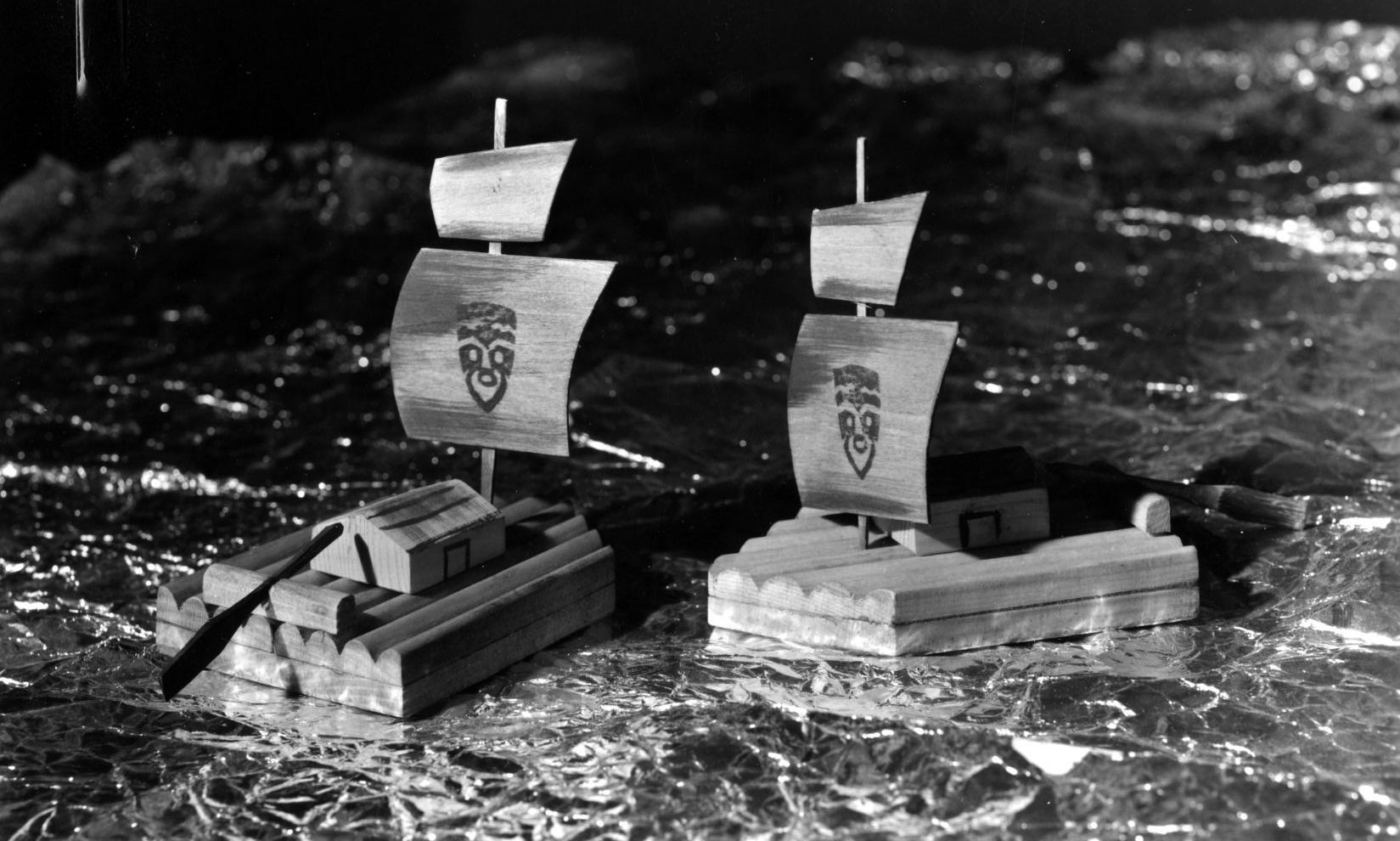

Knut M. Haugland wrote to several of the publishers of Kon-Tiki. On a raft across the South Seas, and proposed the idea of a model fleet kit, but they considered the kit to be both too expensive to develop and too complex to build. Haugland decided to try for himself, based on experience he gained in 1949 when he and two of his brothers made eight fleet models for Syncron Film A/B to be used in the launch of the Kon-Tiki Expedition for cinemas.
He made a complete set of drawings for a 1:50 scale model kit and aimed to start production himself with the help of Oddvar Sandersen, a friend from his army days (Company Linge). However, Knut M. Haugland was busy earning his stars and becoming an officer.
On the advice of Thor Heyerdahl, he contacted Arne Tjomsland, a young art director who started a business designing and producing souvenirs, and they met at Easter 1952.
An official Kon-Tiki raft scale model kit made of balsa wood was then made in Norway
During the following winter, production began. New, professional line drawings were made by architect B. Marlow at Platou, for NOK 400. Whether that is the fee for the drawings or whether it also includes the printing for the first set of scale model kits we do not know.
Arne Tjomsland later became known for his ability to design souvenir figurines. The Kon-Tiki fleet-scale model kit, which had a finished design and finished drawings, did not need much work, so Tjomsland put his creativity into the design of the box and other contents of the kit. The box was beautifully designed in azure blue, white and black.
Two different model kits, very much simpler than the original 1:50 kit from 1953-54, were sold until the 1990s at the Kon-Tiki Museum.
However, the exact history and producers have not been established. They were sold in two different scales. One, probably produced on Ottar Lilleengen's simplified scale 1:150 version of the original kit. It is even possible that these sets were mainly produced with parts originally made by Ottar Lilleengen's carpentry workshop in Gjøvik. Some of the machines used for this production are still found on Lilleengen's farm. The other is in scale 1:114 and was also sold as a single building kit. Sales of these models were discontinued after 1992 due to frequent complaints that the kit was very difficult to assemble. Apparently these model kits were sold without instructions and may have had problems with the parts. Both sets had main stocks made of balsa wood.
An advertisement in Norwegian for the scale model from June 1956, aimed at people in the Norwegian armed forces. They can order sets for NOK 24 per set, or about US$ 2.5.
Currently, the Kon-Tiki Museum only sells assembled models of the Kon-Tiki fleet to visitors. One is handmade in Bolivia from balsa wood, and the other (scale 1:95) is made in Vietnam.
One of two assembled models of the raft sold by the Kon-Tiki Museum. This is manufactured in Vietnam.
The Kon-Tiki Museum's archive has 5 Kon-Tiki scale model kits made by commercial manufacturers. Below are pictures and all the available information we have about these sets.
Et fransk modellsett i plast fra ca. 1953
Knut M. Haugland mentions in his correspondence a plastic model set of Kon-Tiki sold in Oslo's most famous department store, Steen & Strøm, apparently made in France. This is from the time just after they released the first version of Knut M. Haugland's designed balsa wood model kit. Nothing more is mentioned about it.
Recently, two different sets from the same manufacturer were for sale on E-Bay. There are no marks on the model or illustration drawing. One set is of the Kon-Tiki fleet, with a large color illustration. The second set is of a generic balsa wood raft, illustration drawing in black and white. Since the two sets are exactly the same shape, the most likely reason for the differences is that they were made aware that they then needed a license to brand their model Kon-Tiki.
The model kits are simple models, with the whole raft molded in one piece, and with the bamboo hut, the sail, the sail yard, the mast, a wooden barrel and two fish as parts to be put together.
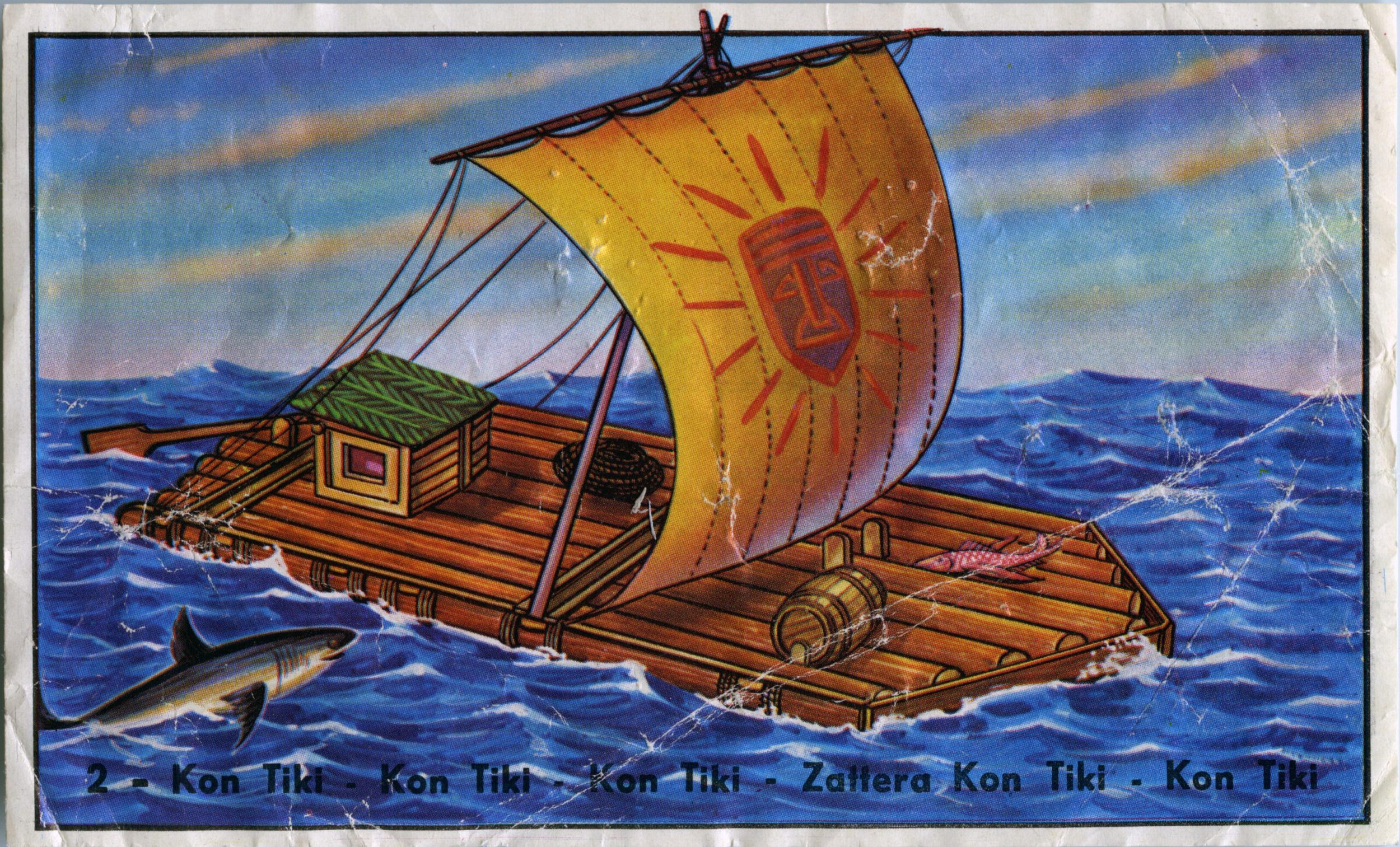
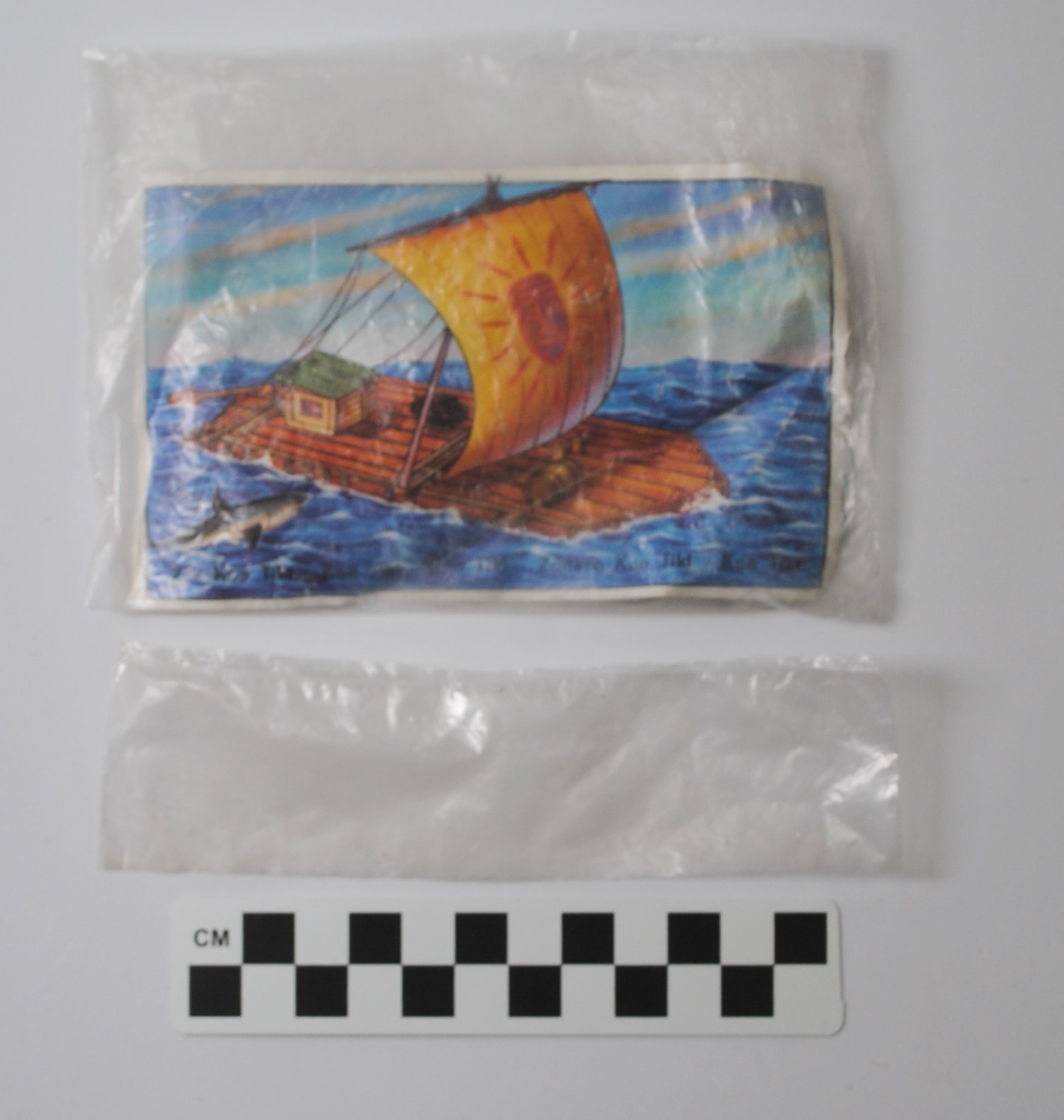
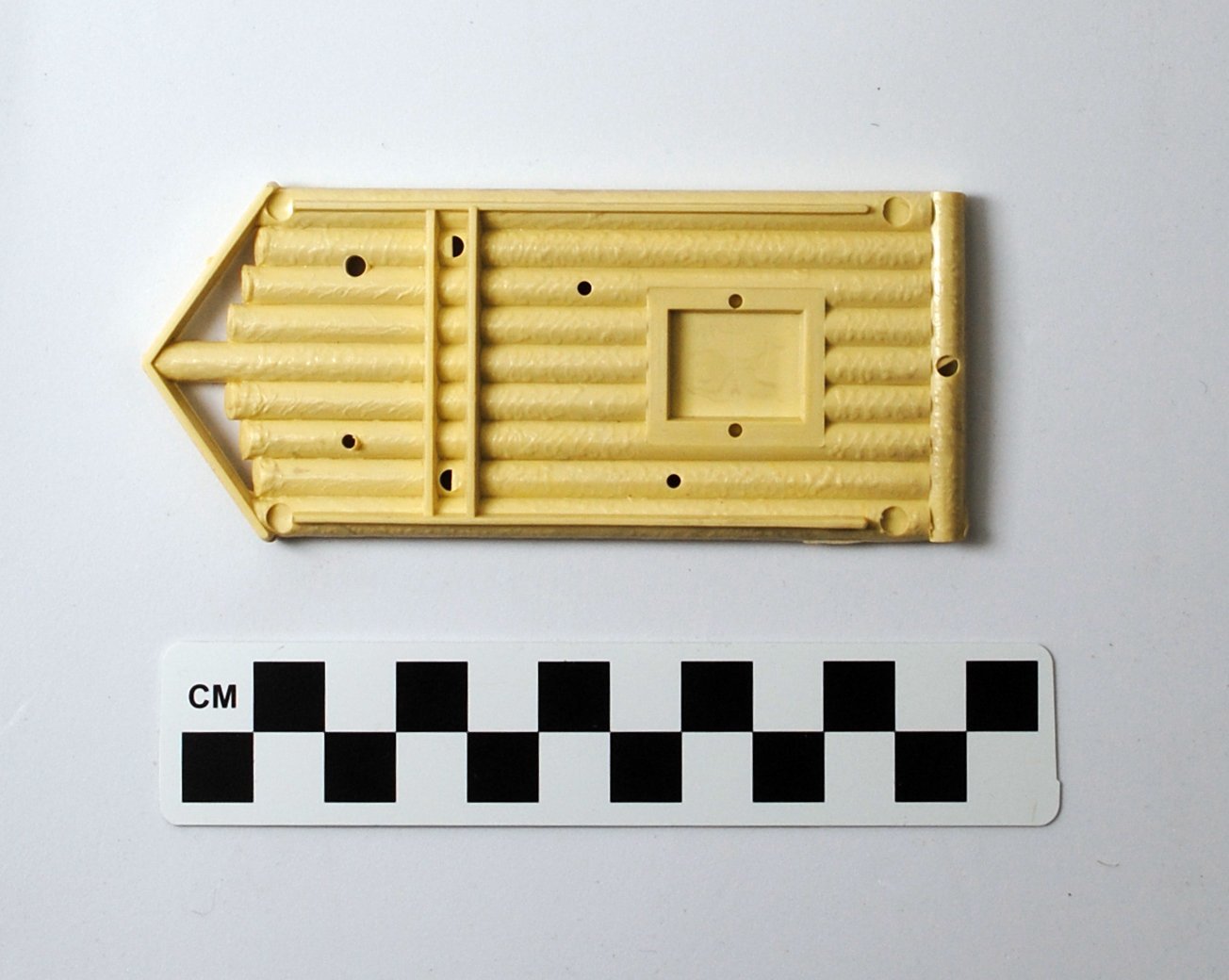
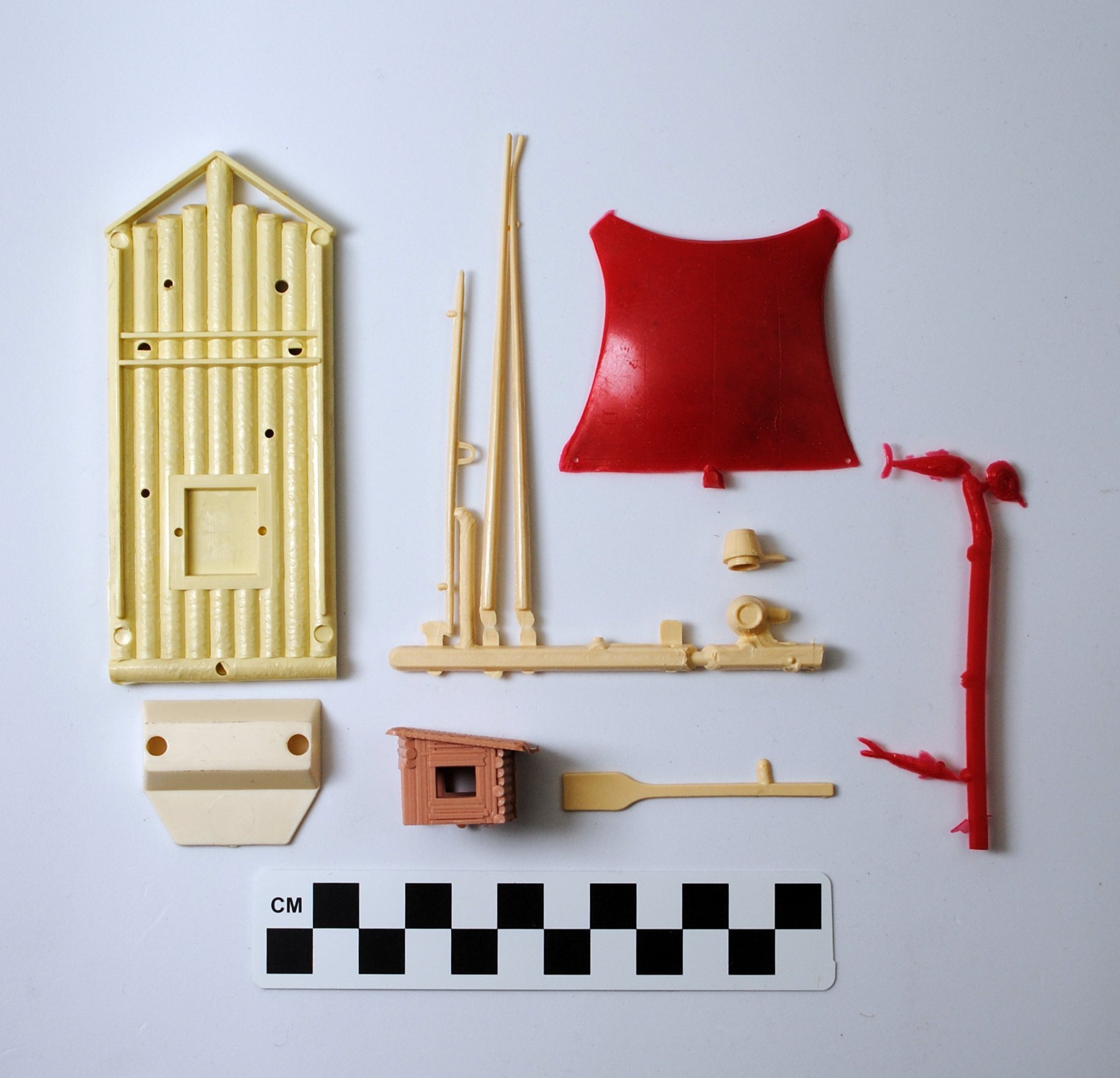

The Hegi-Modellbau-model from 1978
In 1978, Hegi-Modellbau, in Bünde, Germany, patronized a 1:31 scale model kit of the Kon-Tiki fleet with the number B-3301. The base consists of 7 sticks made from one piece of balsa wood, which makes it easy to assemble, but also quite imprecise.
The Mantua-model
For many years the best, and possibly only, scale model kit of the Kon-Tiki fleet available was the Italian manufacturer Mantua's kit 708. This is a 1:18 scale kit and is 590mm long. (If we want to nitpick, this is actually 1:23 scale.) It's a high quality kit with the main stocks made from balsa wood. The pre-printed coconut palm leaves, which are thatched for the roof, are of exquisite manufacture. There are some inaccuracies in the set, such as a non-existent window in the cabin.
The Mantua 703 kit. Boxart and interior look.
A Mantua 703 built by Adam Polinski
Here are some pictures from a fantastic scale model of the Kon-Tiki fleet, based on the Mantua 703 kit. The builder is Adam Polinski, from Mount Prospect, Illinois, USA. He builds just about any genre, from figures and military to automotive and aviation. The Kon-Tiki float was inspired by the need to add Pacific Islands decor to a Tiki bar Polinski built for a family member in northern Wisconsin. The opportunity to build a type of wooden ship could not be resisted.
The build itself, based on the Mantua 703 kit, was carried out between January and April 2022, working mostly on weekends and an hour or two a day in between. Although the build is based on the 703, a good part of the fleet is scratch-built. The bamboo flooring is actual bamboo shish-kebab skewers dyed to look like bamboo sticks. The flags are blue painters masking tape that was masked to represent the various flags flown on the fleet.
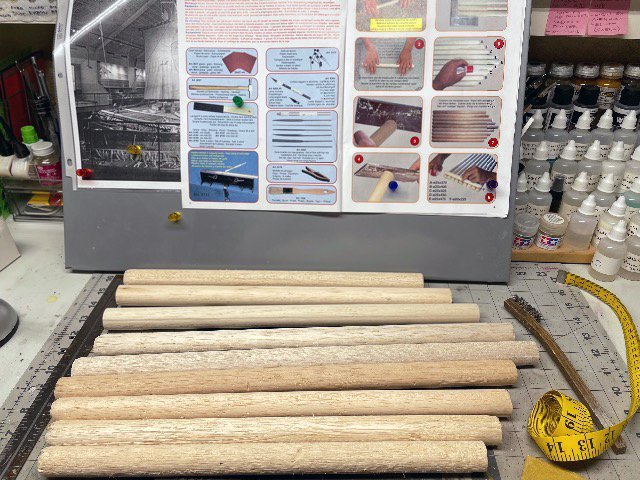
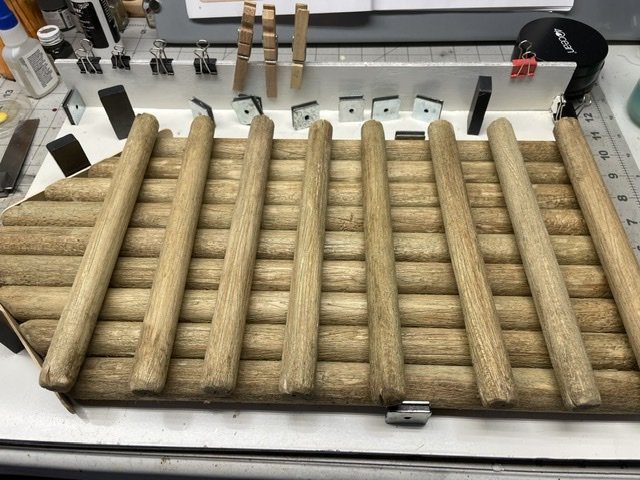
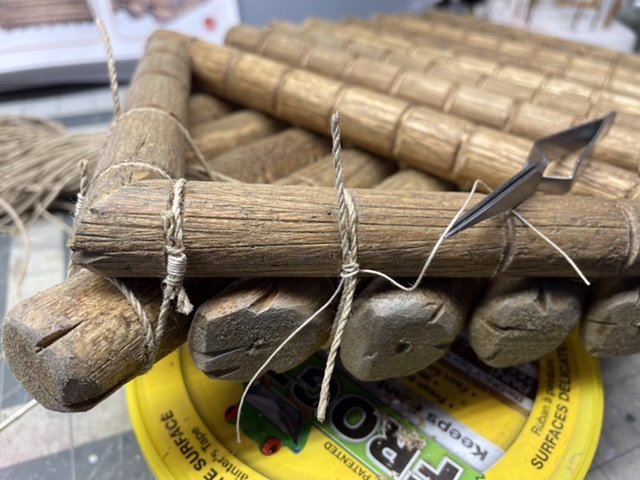

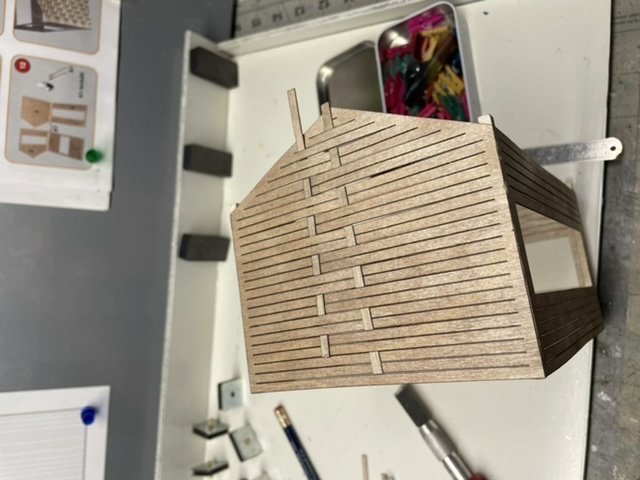
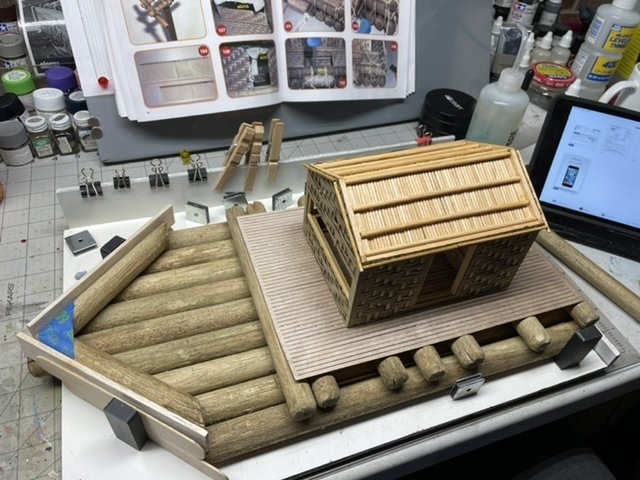
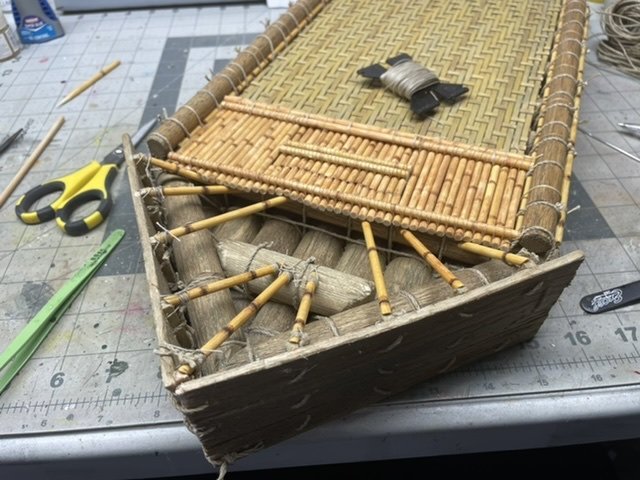

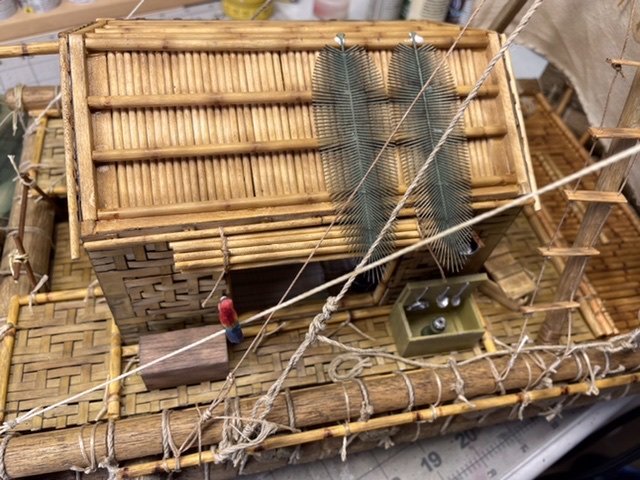
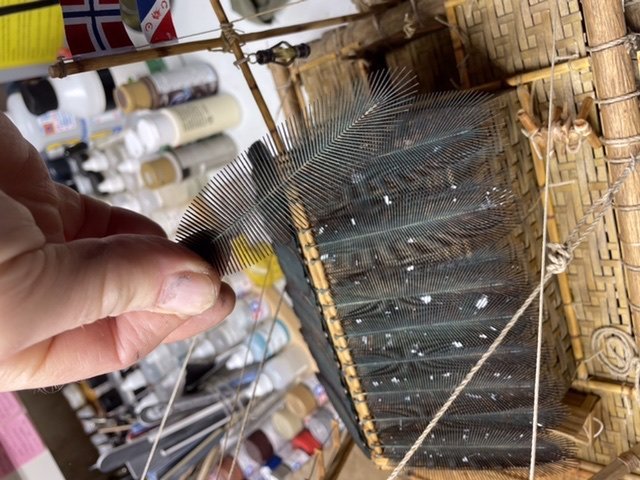
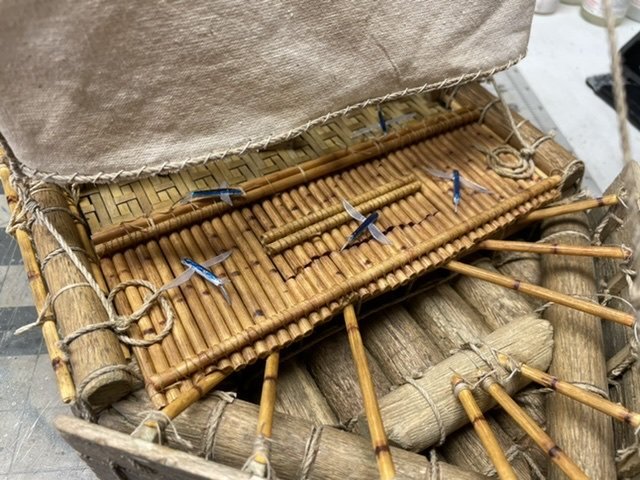
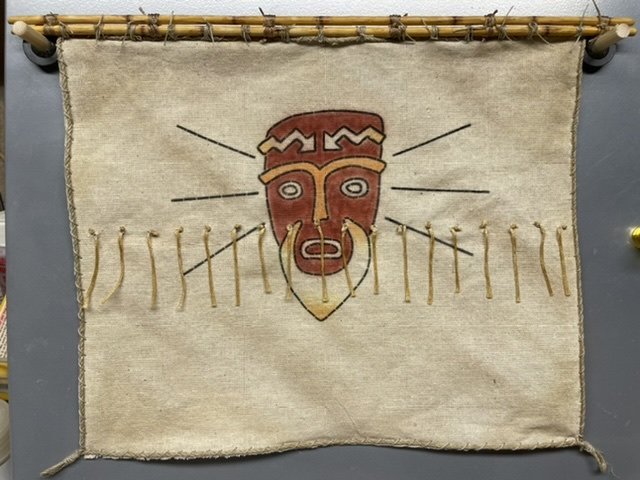
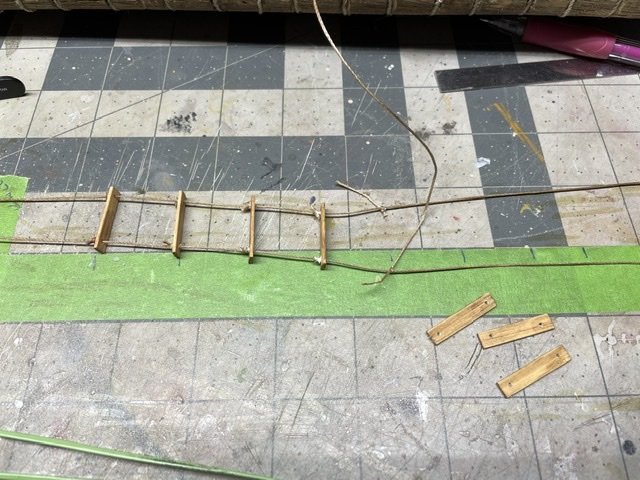
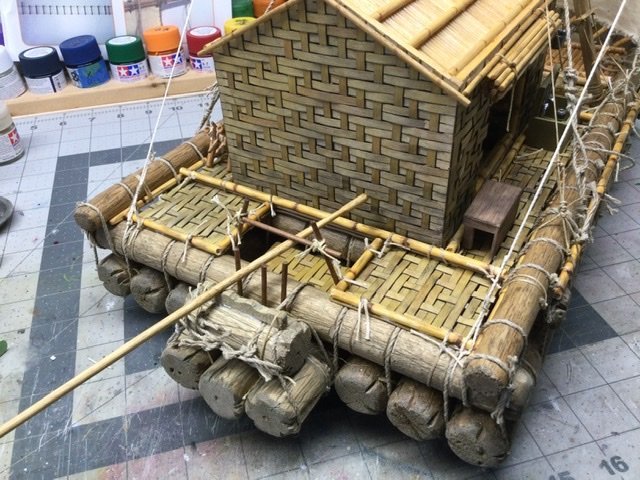
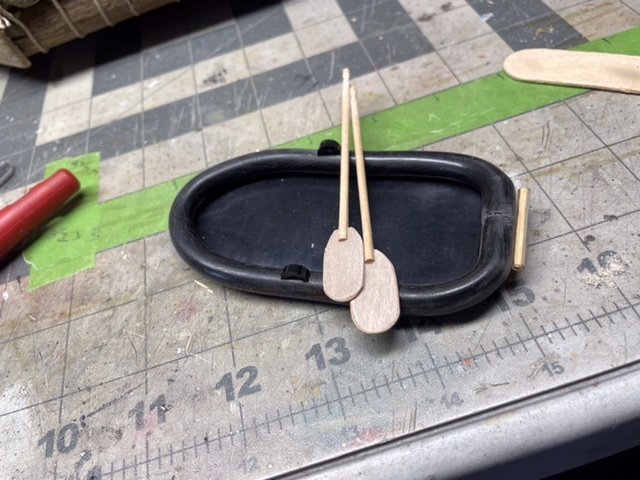

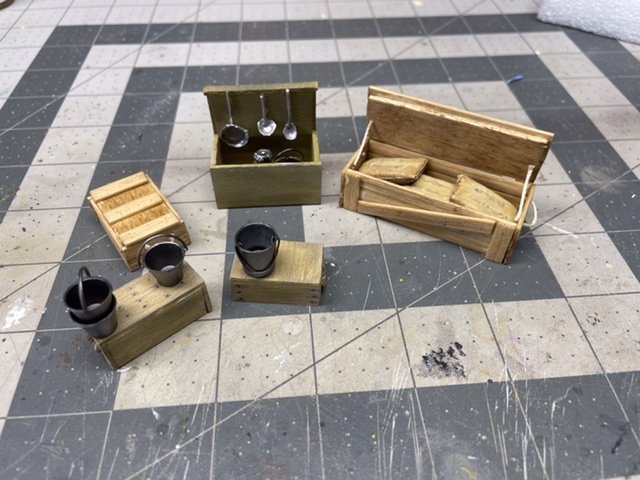
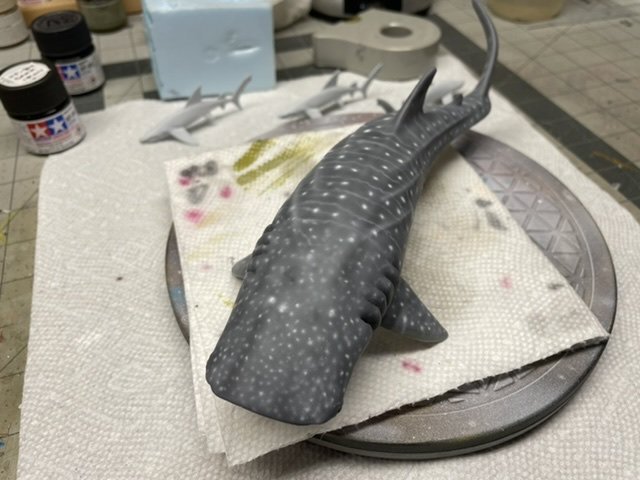

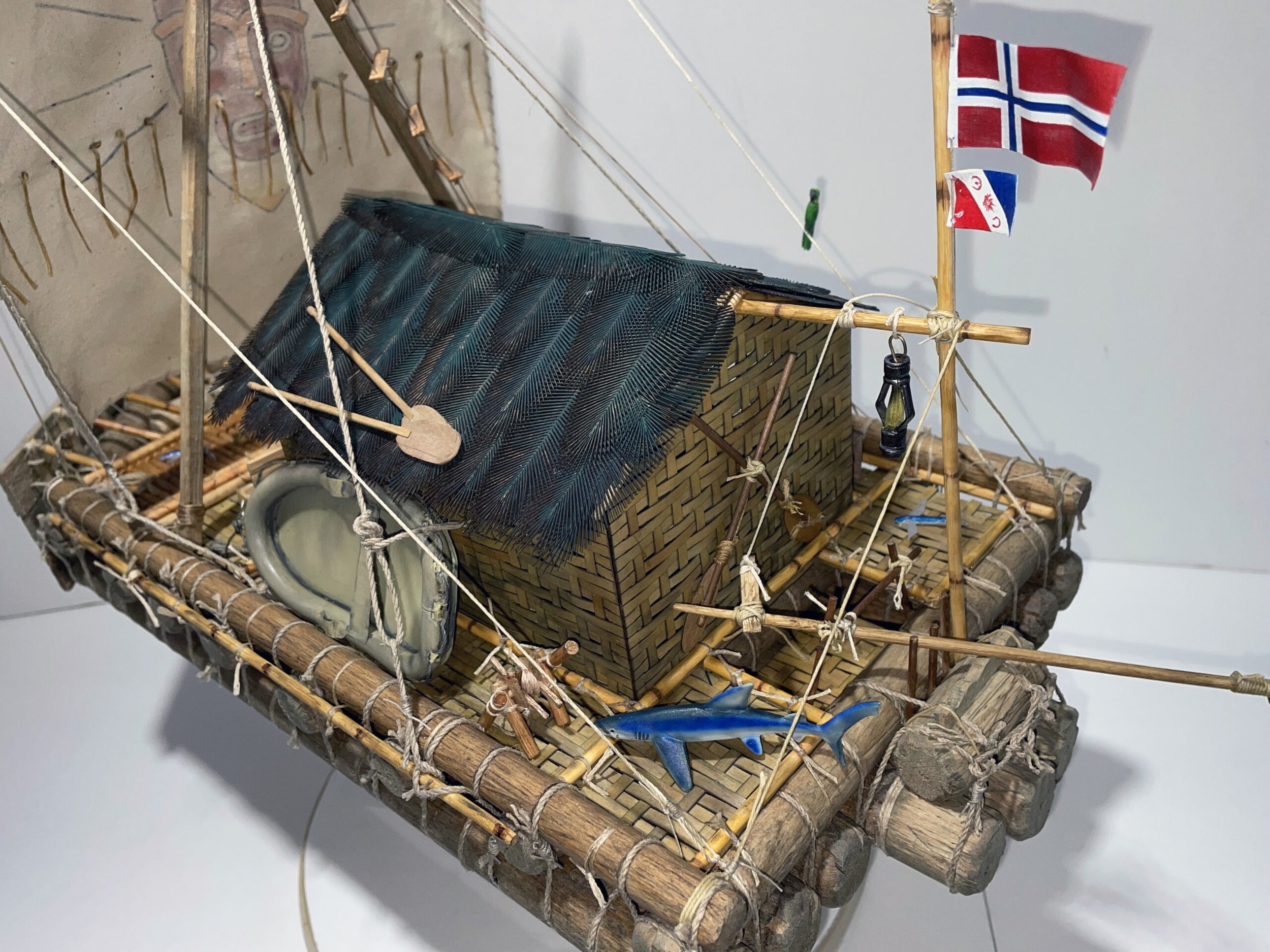
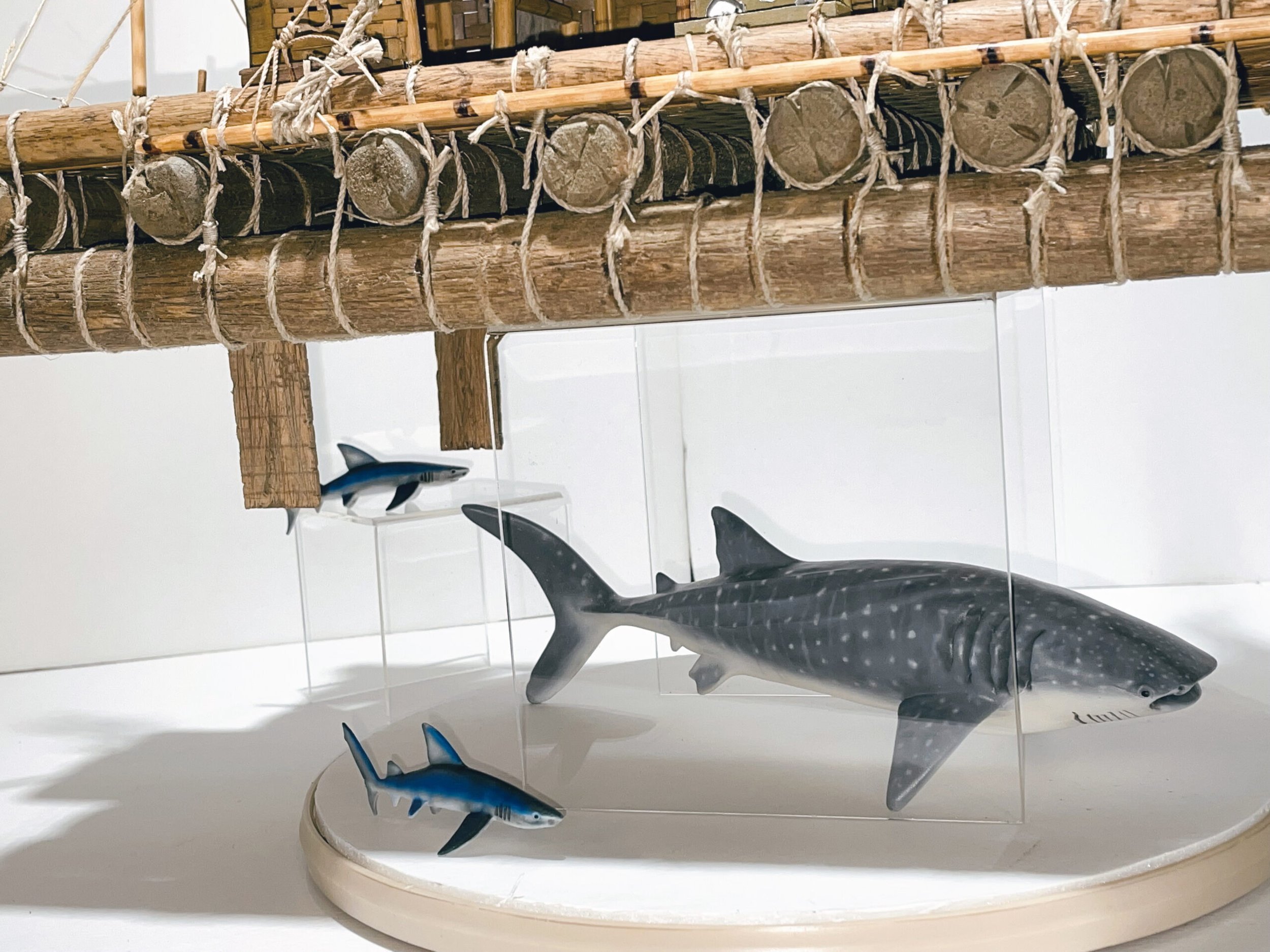

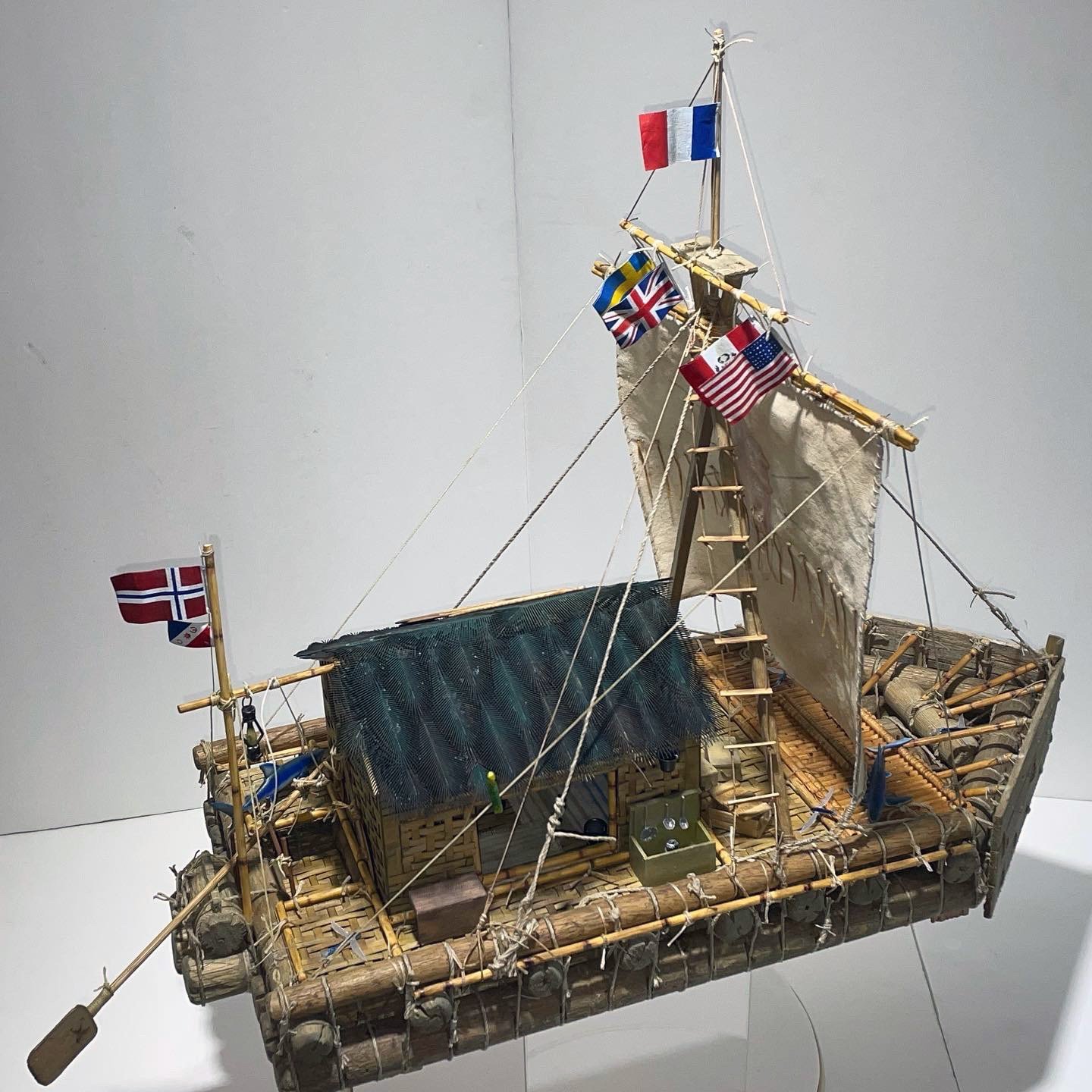
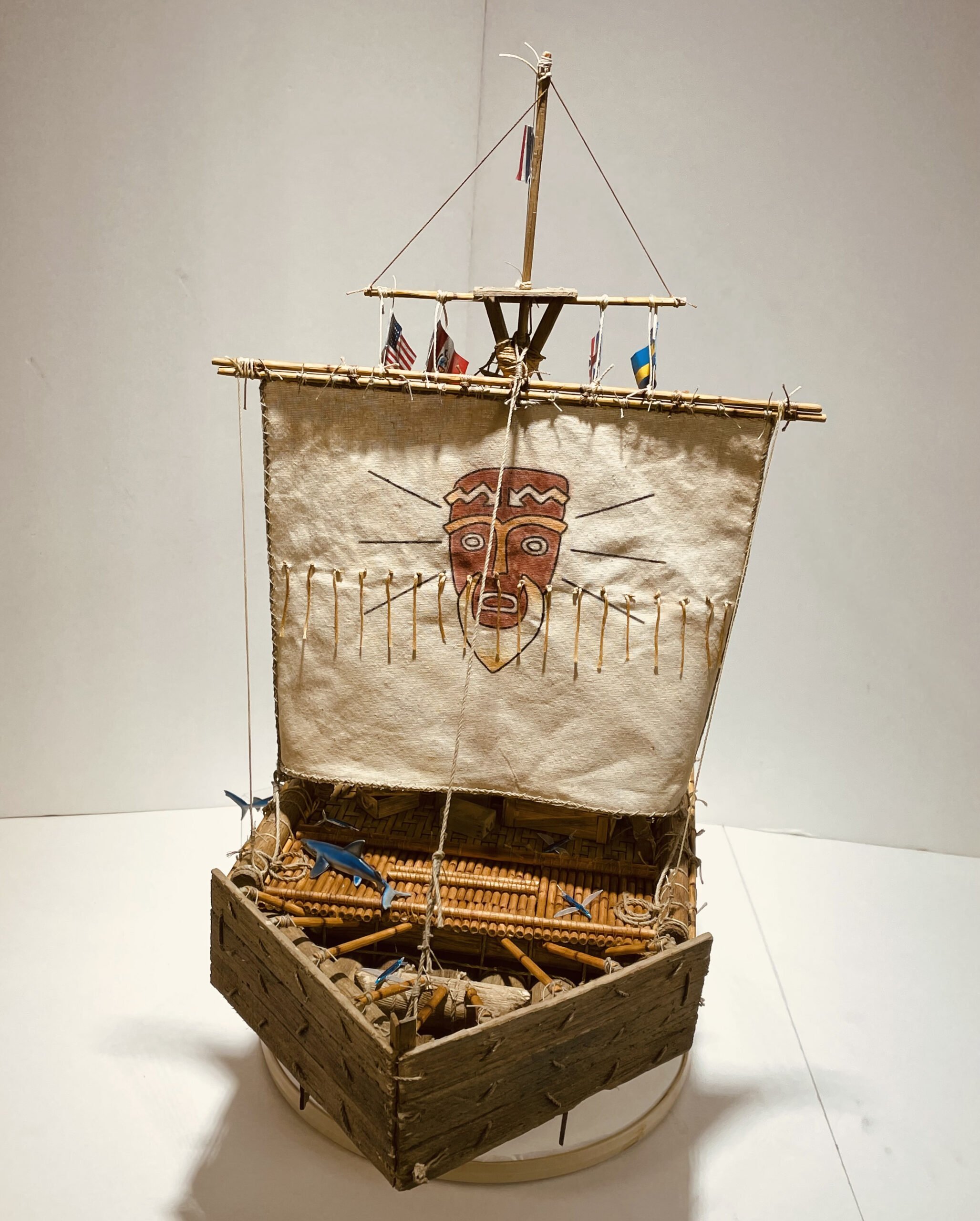
Scale model of the Kon-Tiki raft built by Adam Polinski. It is based on the Mantua 703 set (Photo: A. Polinski).
The relatively new Shicheng Model-set
A few years ago, the Chinese company Shicheng Model released a new scale model kit of the Kon-Tiki fleet, No. W021. It is supposedly in 1:16 scale, but the model seems closer to 1:45 scale. It's a nice wooden set (not balsa) with some nice features like a small rubber ring and some box features.
We would love to know if there are more models out there!
If you have another set or know of one, please email us.




